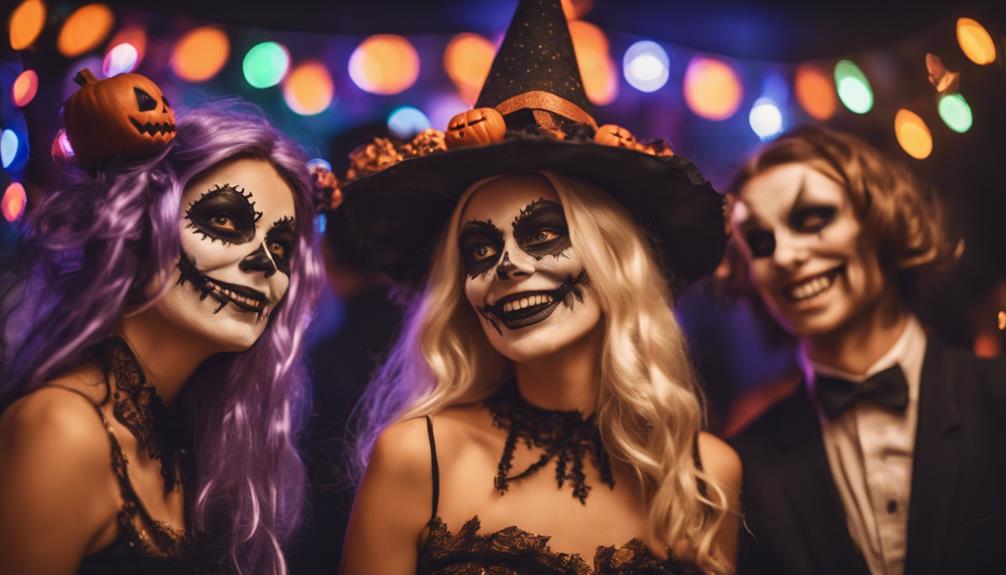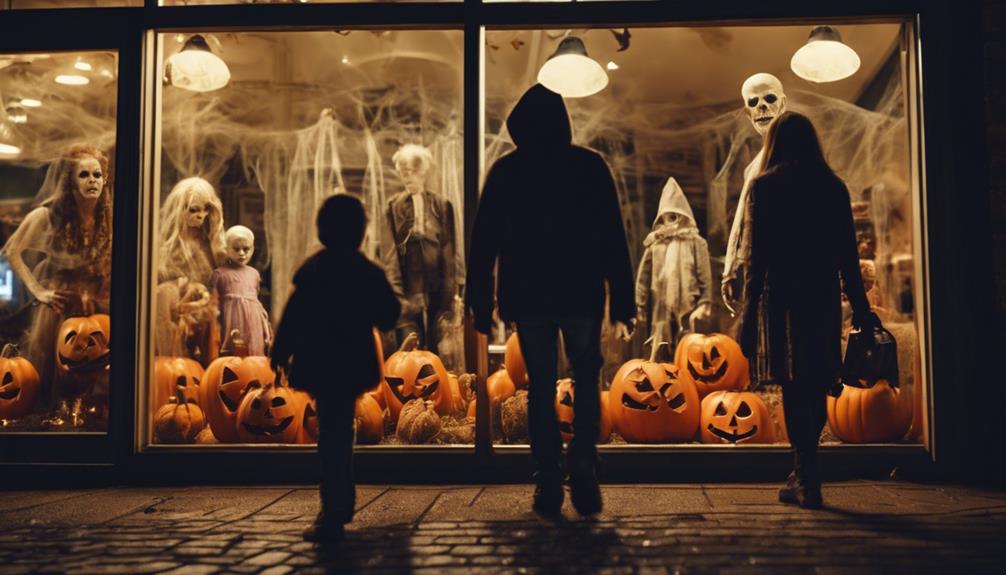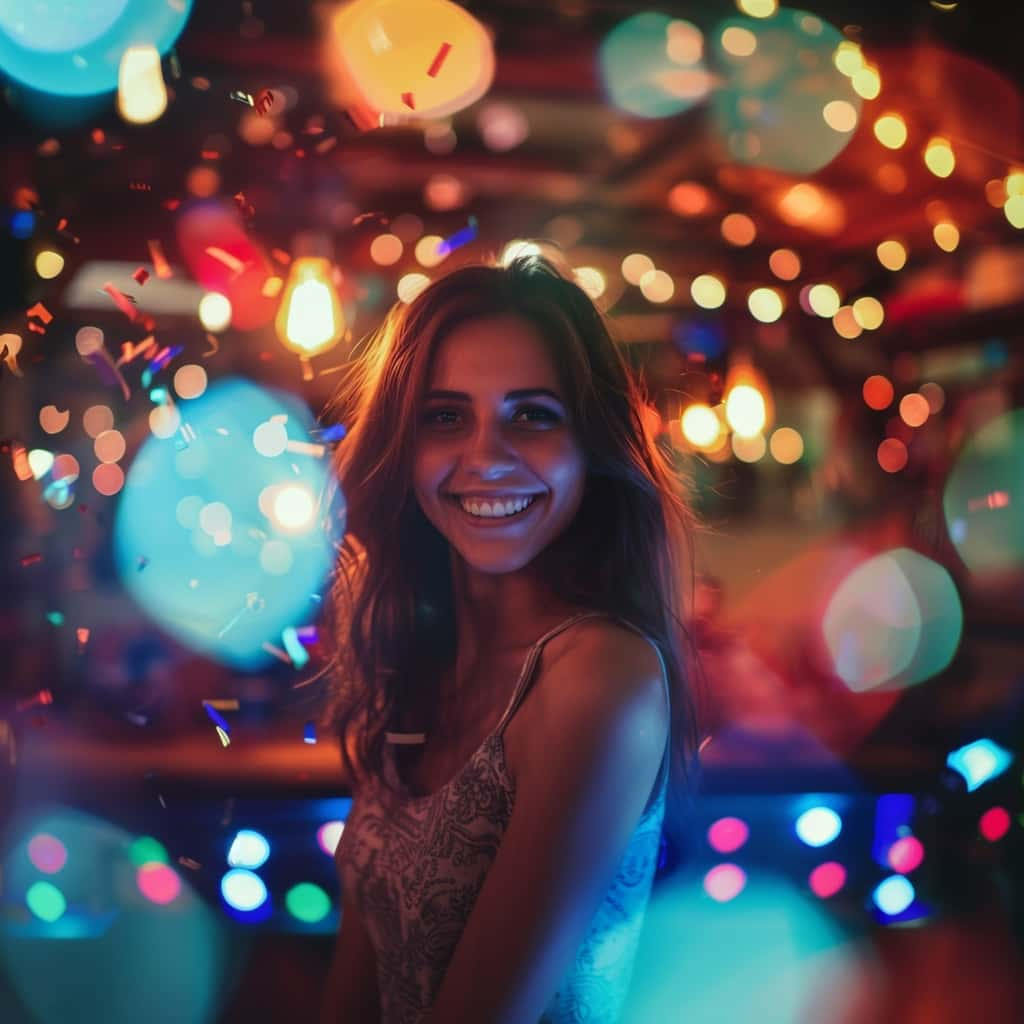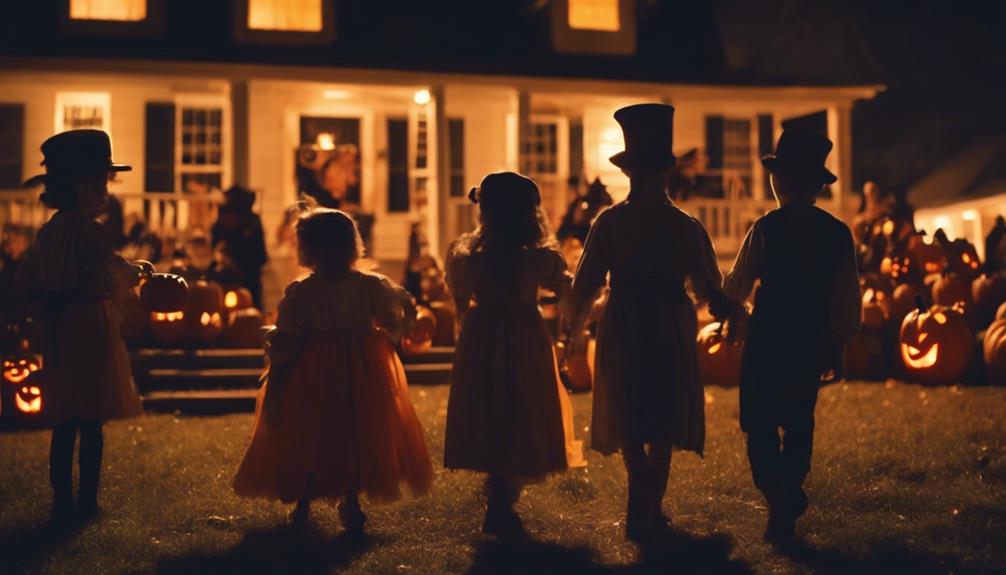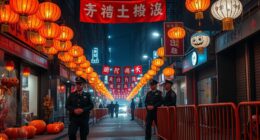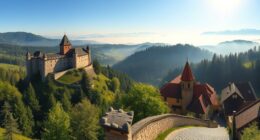Dressing up for Halloween allows you to connect with ancient traditions, express creativity, and join a vibrant community celebration. The practice traces back to Celtic rituals, where costumes were worn to repel spirits and honor the otherworldly. Today, putting on a costume boosts your confidence, sparks imaginative play, and fosters social bonds. As costumes evolved from simple designs to intricate characters, they became a central part of the Halloween experience. Engage with your neighborhood, showcase your creativity, and immerse yourself in the magic of Halloween by donning a costume. Uncover more about the rich history and impact of Halloween dress-up.
Key Takeaways
- Boosts confidence and self-expression.
- Enhances social interaction and creativity.
- Reflects cultural traditions and personal interests.
- Fosters community engagement and shared experiences.
- Adds fun, mystery, and excitement to Halloween festivities.
Origins of Halloween Costuming
Origins of Halloween Costuming can be traced back to ancient Celtic traditions aimed at protecting against malevolent spirits during the festival of Samhain over 2,000 years ago. The Celtic festival of Samhain marked the end of the harvest season and the beginning of winter, a time when it was believed that the barrier between the living and the dead was at its thinnest.
To ward off spirits that may cause harm, people would wear costumes made of animal skins and heads, disguising themselves to blend in with the otherworldly beings wandering the earth. By dressing up in these costumes, individuals hoped to avoid being recognized by malevolent spirits and escape their wrath.
The concept of donning costumes as a form of protection during Samhain eventually evolved into the Halloween tradition we know today, where dressing up in various costumes has become a fun and festive way to celebrate the holiday while honoring its ancient roots.
Cultural Significance of Costumes
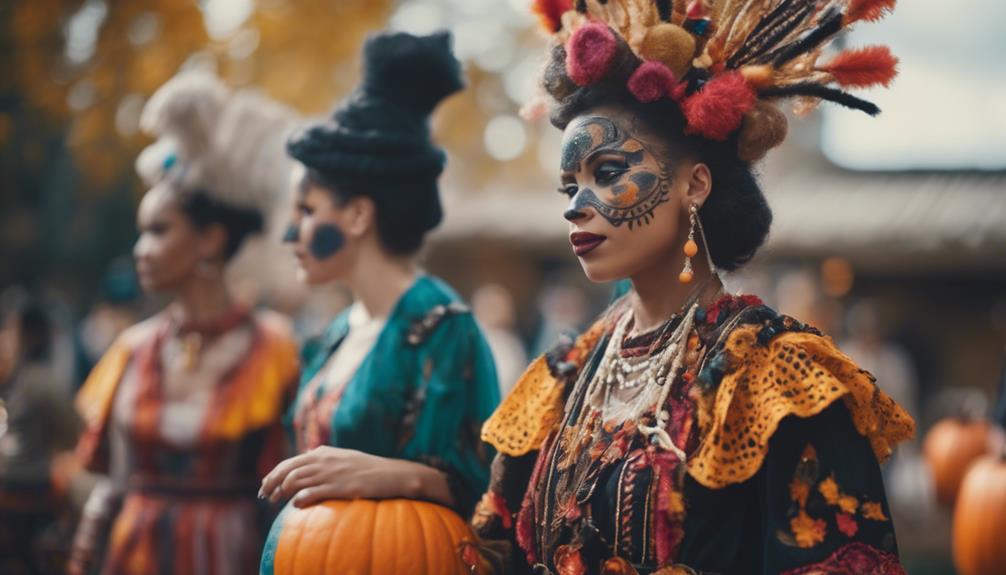
Costumes have evolved from their original purpose of warding off malevolent spirits during ancient Celtic festivals to now hold a significant cultural importance in modern Halloween celebrations. The Pagan tradition of wearing costumes during the festival of Samhain eventually merged with Christian practices, leading to the Halloween costumes we're familiar with today.
These costumes were initially worn to scare off spirits and fairies believed to be present during the festival, a practice that has transformed over time. Today, dressing up in Halloween costumes is a way to connect with traditions, express creativity, and explore different identities. The cultural significance of Halloween costumes lies in their ability to reflect popular culture, historical events, and personal interests.
Psychological Impact of Dressing Up
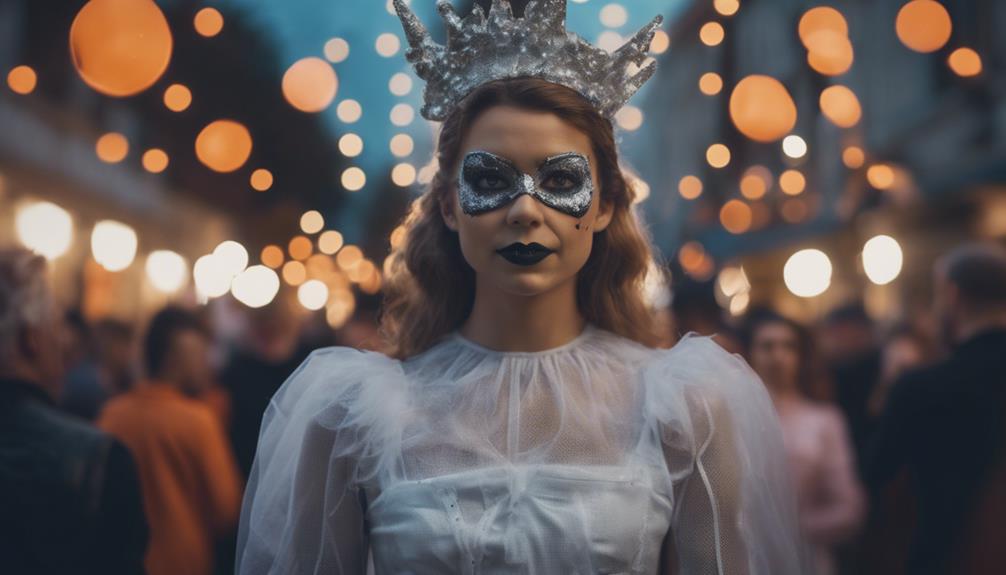
Exploring the psychological effects of dressing up for Halloween reveals the transformative power costumes can have on individuals' experiences and interactions during the festive season. Wearing a costume during Halloween can provide a sense of anonymity and liberation, allowing you to step out of your everyday identity and embrace a different persona. Psychological studies indicate that donning a costume can boost your confidence and encourage social interaction, making it easier to engage with others at Halloween gatherings. Costumes offer a form of escapism, enabling you to embody your favorite characters or fantasies for a brief period, which can be both fun and liberating. The act of dressing up can trigger feelings of nostalgia, creativity, and playfulness, enhancing your overall Halloween experience. Research suggests that choosing and wearing costumes can stimulate your creativity and imagination, leading to a heightened sense of self-expression.
| Psychological Impact of Dressing Up |
|---|
| Boosts confidence |
| Encourages social interaction |
| Triggers creativity |
| Enhances Halloween experience |
Historical Evolution of Costumes
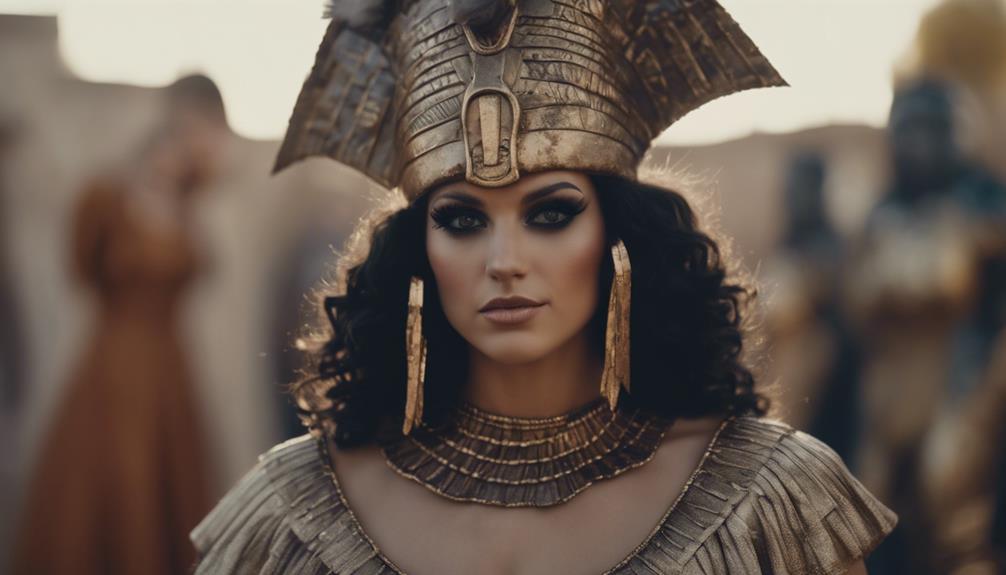
Throughout history, the evolution of Halloween attire has witnessed a remarkable shift from simplistic designs to intricate and elaborate creations. Costumes have played a significant role in the traditions of Halloween, transforming from basic outfits to elaborate ensembles that capture the essence of the holiday spirit.
The evolution of costumes can be traced back to ancient Celtic rituals, where individuals wore disguises to ward off evil spirits during Samhain celebrations. As time progressed, costumes became more elaborate, incorporating various themes and characters to enhance the festive atmosphere of Halloween.
Businesses began marketing popular characters as costumes in the 1920s, shaping the modern Halloween attire we see today. By the mid-20th century, costumes had become a staple for Halloween parties, allowing individuals to embody different personas and add an element of mystery and excitement to the celebrations.
Today, modern costumes are well-planned and executed with creativity, transforming individuals into various characters and enhancing the overall Halloween experience.
Social Connection Through Costuming
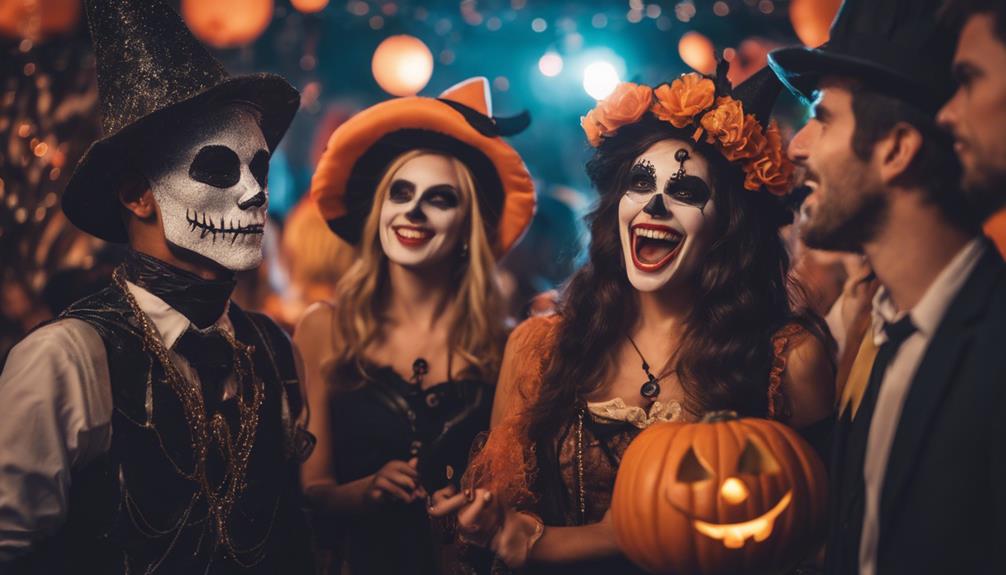
When you choose a costume for Halloween, you're not just dressing up – you're building connections with others. Your costume creativity can spark conversations, create shared experiences, and send nonverbal signals that help you connect with fellow revelers.
Costume Creativity Builds Bonds
Indulging in costume creativity during Halloween cultivates strong social connections and fosters a sense of camaraderie among participants. When people dress up in unique costumes for a Halloween party, it goes beyond just wearing outfits—it becomes a shared experience that brings everyone closer together. Here's why costume creativity builds bonds:
- Showcasing Personality: Costumes allow individuals to express their personality and interests in a fun and interactive way.
- Creating Community: Participating in costume-themed events like Halloween parties creates a sense of community and togetherness.
- Spark Conversations: Costume creativity can spark conversations, laughter, and connections with others, enhancing the festive atmosphere.
- Building Memories: The collaborative process of planning and creating costumes strengthens relationships and builds lasting memories that bond people together.
Shared Costuming Experiences
Shared costuming experiences during Halloween solidify bonds and foster a sense of community among individuals. When costumes became a shared endeavor, the experience transcends mere dress-up; it becomes a collective expression of creativity and unity.
Group costumes, in particular, have the power to create a sense of camaraderie, enhancing the festive spirit of Halloween by showcasing shared interests or themes. Coordinating costumes with friends or family members not only strengthens relationships but also creates lasting memories that are cherished for years to come.
Participating in themed costumes or group outfits adds an extra layer of fun and excitement to Halloween celebrations, as everyone plays a part in bringing the chosen theme to life. In these shared costuming experiences, teamwork and collaboration are encouraged, fostering a sense of togetherness and cooperation that goes beyond the surface-level enjoyment of wearing costumes.
Such experiences contribute to building strong social connections and a sense of belonging within a community.
Nonverbal Social Signals
Diving into the world of Halloween costuming, individuals communicate nonverbally, fostering social connections and interactions through their creative expressions.
- Costuming for Halloween offers nonverbal social signals, enhancing social connections and interactions.
- Dressing up allows individuals to express themselves creatively and engage in shared experiences with others.
- Costumes create a sense of community and camaraderie by fostering a shared identity during Halloween celebrations.
- Through costuming, people can break social barriers, spark conversations, and establish connections with strangers.
Costumes not only serve as fun disguises but also as powerful tools to connect with others on a deeper level, transcending verbal communication.
By donning different personas, individuals can break free from societal norms, promoting inclusivity and a sense of belonging within communities.
Creativity and Self-Expression
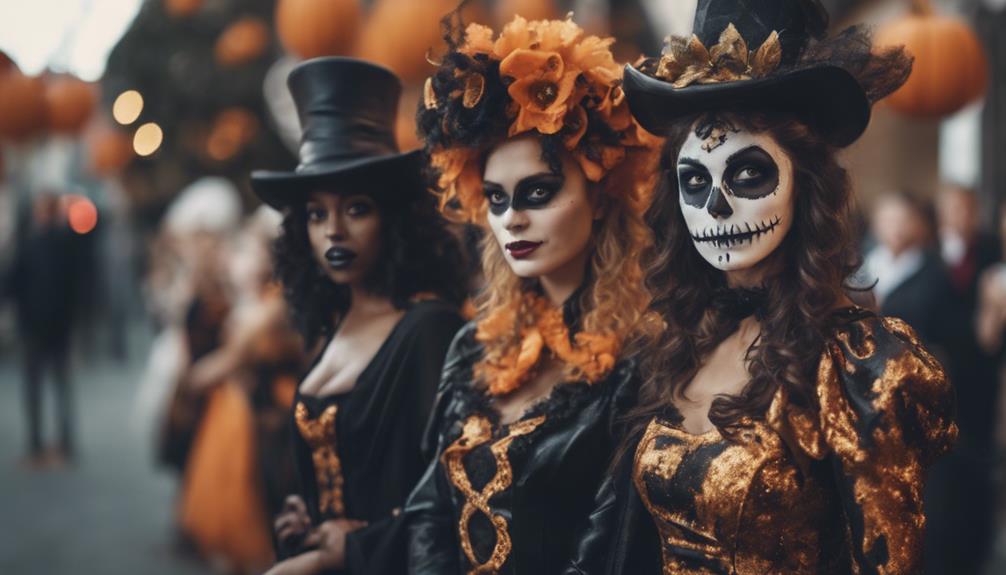
Expressing your creativity by designing unique Halloween costumes provides a dynamic platform for self-expression and exploration of different personas. Halloween offers a festive opportunity to showcase your individuality through the art of crafting or selecting elaborate outfits.
Embracing this creative process allows you to delve into diverse characters and express various aspects of your personality that may not always be visible. The act of dressing up for Halloween transcends mere costume selection; it becomes a means of embodying fantasy, history, or even pop culture icons.
By donning these creative ensembles, you can immerse yourself in a world of make-believe, where self-expression knows no bounds. Whether you choose to transform into a mystical creature, a beloved superhero, or a historical figure, each costume reflects a piece of your unique identity, adding a touch of whimsy and charm to the Halloween festivities.
Get ready to express your creativity and explore different facets of yourself through the magic of Halloween costumes.
Impact on Community Engagement
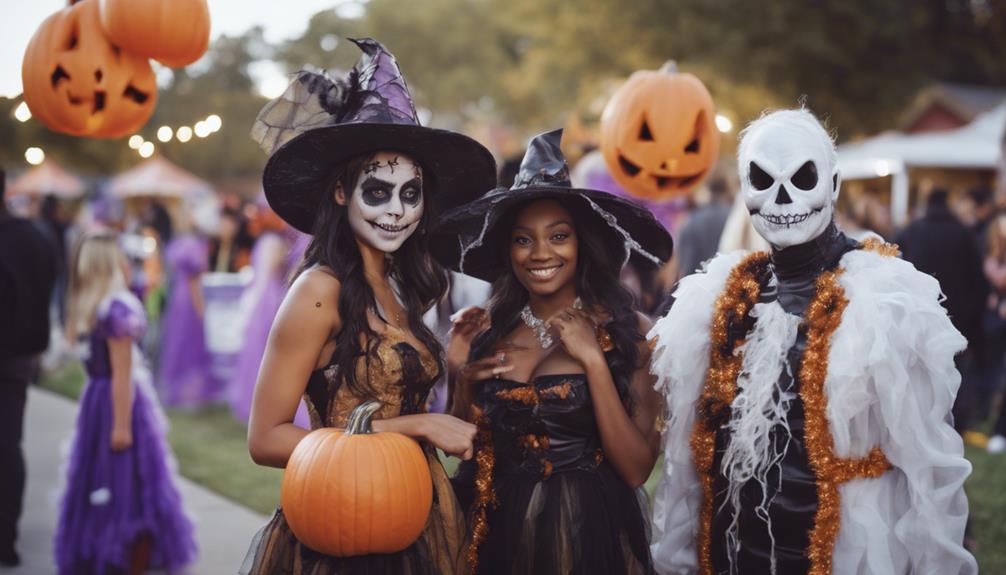
Halloween costumes play a pivotal role in fostering a sense of community engagement through shared creativity and fun. When you participate in dressing up for Halloween, you contribute to a shared experience that brings neighborhoods together. Costume parties and events not only offer opportunities for social interaction but also aid in building relationships with others. By joining in the Halloween spirit, you can feel a stronger sense of belonging and camaraderie within your community.
Additionally, dressing up for Halloween can inspire teamwork and collaboration, especially when creating group or themed costumes. This community engagement during Halloween helps promote a festive atmosphere and strengthens bonds among participants.
- Community engagement: Halloween costumes encourage interaction and connections within neighborhoods.
- Shared creativity: Participating in dressing up allows for creative expression and shared experiences.
- Sense of belonging: Joining in the Halloween fun fosters a feeling of inclusion and community spirit.
- Costume parties: These events provide a platform for socializing and forming new relationships.
Fun and Playfulness in Dressing Up
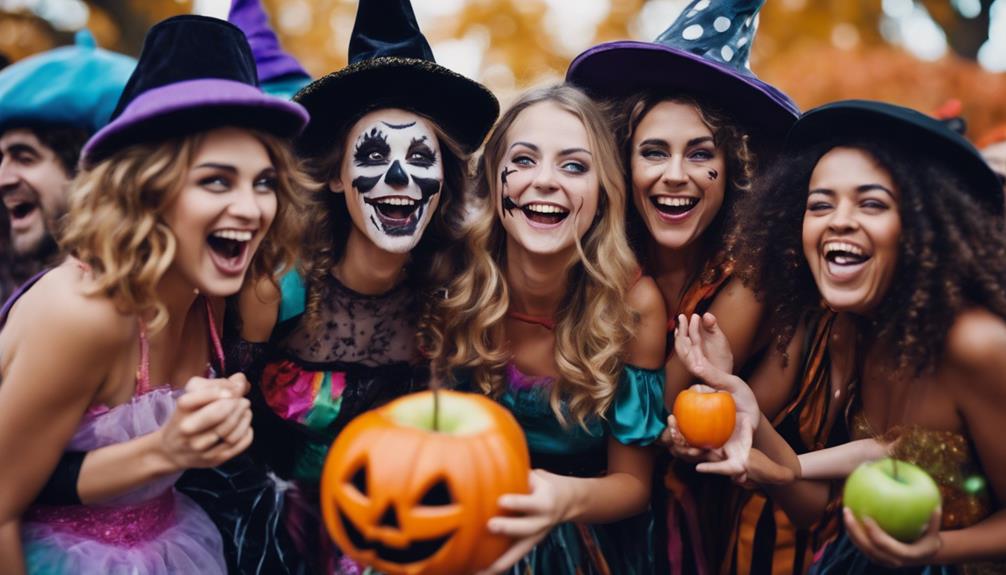
What makes dressing up for Halloween such a fun and playful experience? Halloween costumes bring out the creativity and imagination in everyone. When you slip into a costume, you're not just putting on clothes – you're stepping into different roles and characters. This transformation adds a sense of mystery and excitement to the holiday festivities. The process of choosing and embodying a character allows you to explore new personas and engage in the holiday spirit in a unique way.
The fun and playfulness of dressing up for Halloween go beyond just wearing a costume. It's about immersing yourself in a world of make-believe and fantasy, where you can become someone else for a little while. Whether you're a superhero, a villain, a mythical creature, or a historical figure, the act of dressing up lets you escape reality and embrace the magic of the holiday. So, let your imagination run wild, and enjoy the thrill of becoming someone new this Halloween!
Frequently Asked Questions
What Is the Reason We Dress up for Halloween?
When you dress up for Halloween, you embrace the tradition of embodying different characters and personas. It adds excitement and storytelling to the celebrations, immersing you in a world of mystery and transformation.
Costumes have evolved from simple designs to elaborate creations, allowing you to explore the roots of the holiday and enhance your creativity. It's a fun and immersive way to participate in the festivities, making Halloween more engaging and memorable.
What Was the Original Purpose of Dressing up for Halloween?
The original purpose of dressing up for Halloween was to protect yourself from spirits and fairies during the Celtic festival of Samhain. People believed that costumes would shield them from returning spirits and ancestors on October 31st.
Costumes made of animal skins were worn for disguise and protection against malevolent entities. By dressing up during Samhain, you could blend in with spirits and avoid any potential harm or mischief.
What Are the Benefits of Dressing up for Halloween?
Dressing up for Halloween offers a chance to unleash your creativity and step into different roles. It brings a thrilling element to holiday festivities. Costumes bring an air of mystery and allow for a temporary transformation.
They offer an immersive way to embody beloved characters or ideas. Engaging in Halloween dress-up is a cherished tradition enjoyed by both kids and adults, adding an extra layer of enjoyment to the celebrations.
What Is the Purpose of Halloween Costumes?
The purpose of Halloween costumes is to disguise oneself from evil spirits and ghosts. Costumes historically served to protect individuals from roaming supernatural beings during the Celtic festival of Samhain. By dressing up, people could blend in with these entities and avoid harm.
Originally made of animal skins, costumes provided both a disguise and a layer of protection. Over time, dressing up for Halloween has transformed into embodying scary characters and monsters to celebrate the holiday's spirit.
Conclusion
To sum up, dressing up for Halloween is a tradition that dates back centuries and has evolved into a cultural phenomenon. Did you know that Americans spend an estimated $3.4 billion on Halloween costumes each year?
This shows the significant impact and importance of costumes in celebrating this spooky holiday.
So next time you put on a costume, remember the history, creativity, and fun that comes with dressing up for Halloween!
